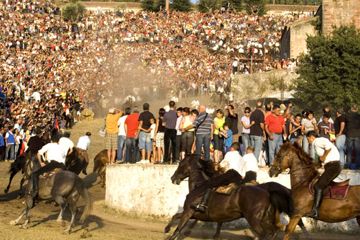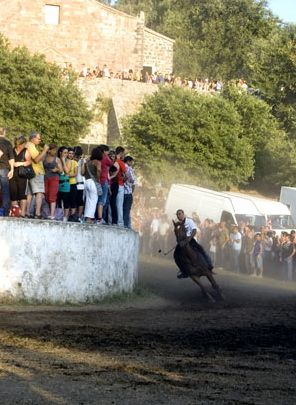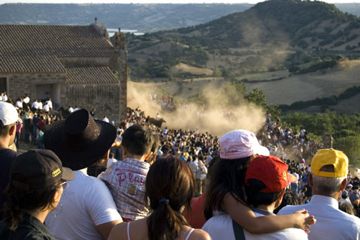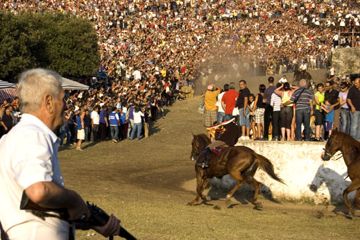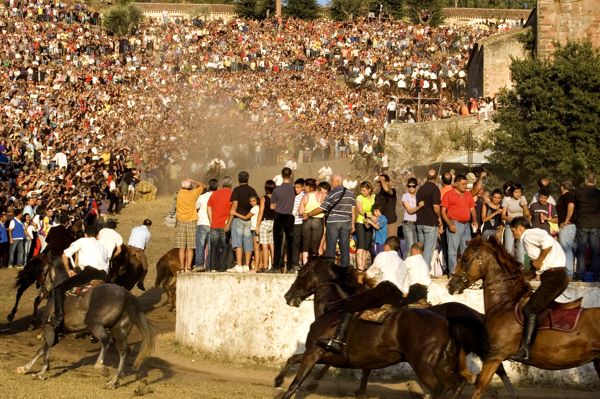
All photos by Angela Corrias.
Like every year on the 6th of July, Sedilo’s top horse-riders charm both locals and tourists gathered around the tiny, pastel-colored sanctuary devoted to St Constantine. They’re here to watch this audacious show, known as S’Ardia.
